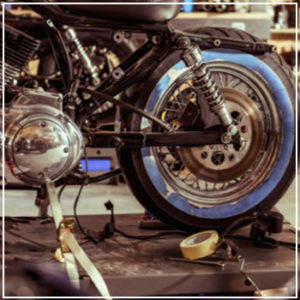
Plenty of motorcycle guides provide advice on how to winterize your bike. Yet, conflicting opinions can make it difficult to know which tips to follow. Once spring comes, your bike could have sludgy fluids or visible rust on the exterior without the right winterization checklist. While having a plan is crucial, you should be mindful to avoid the following mistakes.
Not Filling the Tank
Before placing your bike in storage, fill the tank with fresh gasoline and add fuel stabilizer. Run the motorcycle, so the stabilizer goes through the system.
Settling for Older Fuel
Fuel that your bike has used all season can pick up debris and start to thin out. As gasoline breaks down quickly – especially when a vehicle is not in use – these deposits remain and you’ll end up with varnish deposits in your tank, fuel lines and carburetor.
To avoid this, drain old fuel before winterizing your bike, add gasoline to your tank and fuel stabilizer. Especially if your bike will be sitting in a garage for months, this approach decreases the likelihood of deposits and clogs.
You Use the Same Oil
Your bike’s oil goes through the same process and pattern as your gasoline: It picks up substances and breaks down through repeat use and exposure to heat and oxygen. In storage, this process will continue, resulting in a thick, cloudy consistency when you take your motorcycle out for spring riding. Instead of skipping this crucial step, replace the oil and all other fluids during the winterization process.
You Don’t Charge the Battery
There’s also debate about the right way to treat your motorcycle’s battery in storage. The general consensus is that it will quickly be drained by cold weather unless you keep it charged. You have a couple of options:
- Take the battery out and attach it to a tender
- Keep it inside the bike with a trickle or float charge.
What you don’t want to do is leave it in the bike to drain or take the battery out with no plan to maintain the charge.
You Treat Antifreeze and Coolant the Same
Also a common mistake among car owners, using coolant in your motorcycle can result in repairs once spring arrives. Although often treated interchangeably, antifreeze is a glycol-based solution designed to keep components from freezing. Coolant starts with antifreeze but mixes it with water in a 1:1 ratio.
During winter, the water in coolant can freeze and expand – a greater possibility if your bike is regularly exposed to below-freezing temperatures. This can turn into a more serious issue if you’re a rider who uses pure water for your coolant.
Do not use water; only a brand recommended coolant. All bikes use different types of coolant!
Not Cleaning Off Your Bike
Debris, including dead bugs, road tar, bird droppings and tree sap, can accelerate the corrosion process, especially with moisture in the mix. Not cleaning off your bike before you place it in storage increases the likelihood of rust formation.
Fully clean all surfaces, then wax or lubricate parts susceptible to rust.
Avoid Over-Inflating Your Tires
Many riders have heard of the dreaded “flat spots” that can occur when you leave your bike in one place for too long. Although modern tires are less vulnerable to this issue, it’s better to elevate your bike or place a piece of cardboard or plywood underneath than to overinflate the rubber. This can lead to cracking and an eventual blowout when you go for a spring ride.
You Use the Wrong Storage Conditions
Today, a climate-controlled garage is the gold standard for motorcycle storage. Yet, if this is not a viable option, keeping your bike in the garage or a fully enclosed temporary shelter is the next best thing.
Parking outside or loosely covering the bike with a tarp leaves it vulnerable to the elements, which can dry out seals and invite corrosion, and places it out in the open for thieves.
Have you ever made a mistake when winterizing your motorcycle? Let us know what you learned from the experience on our Facebook page.
